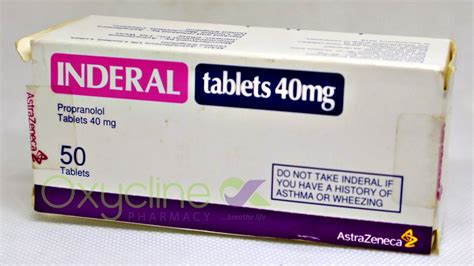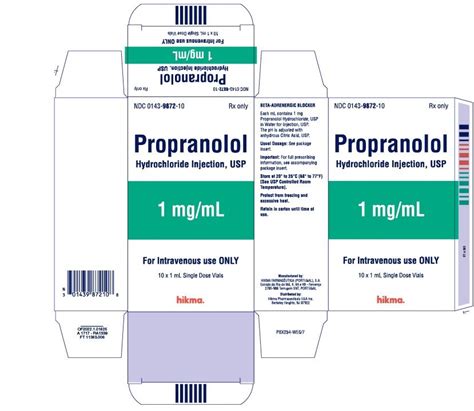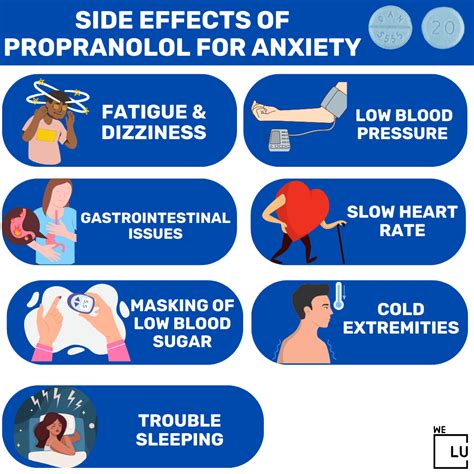Intro
Discover Propranolol uses and benefits, including anxiety treatment, migraines, and performance enhancement, with its beta-blocking properties and therapeutic effects.
Propranolol is a medication that has been widely used for decades to treat various health conditions. Its importance cannot be overstated, as it has improved the quality of life for millions of people worldwide. In this article, we will delve into the uses and benefits of propranolol, exploring its mechanisms, applications, and impact on healthcare. Whether you are a healthcare professional or simply interested in learning more about this medication, this article aims to provide a comprehensive and informative overview of propranolol.
The significance of propranolol lies in its ability to treat a range of conditions, from cardiovascular diseases to psychological disorders. Its versatility and efficacy have made it a staple in many treatment regimens, and its benefits extend beyond mere symptom management. By understanding how propranolol works and what it can do, we can appreciate the importance of this medication in modern healthcare. As we explore the uses and benefits of propranolol, we will also examine the latest research and developments in this field, highlighting the potential of this medication to improve patient outcomes.
Propranolol has been a subject of interest in the medical community for many years, with ongoing research and studies aimed at uncovering its full potential. From its early use as a treatment for hypertension to its current applications in anxiety disorders and performance enhancement, propranolol has come a long way. Its impact on healthcare is undeniable, and its benefits are felt by patients and healthcare professionals alike. As we navigate the complexities of propranolol, we will discuss its mechanisms, side effects, and interactions, providing a thorough understanding of this medication and its role in modern medicine.
What is Propranolol?

Pharmacology and Mechanism of Action
Propranolol's mechanism of action involves the blockade of beta-adrenergic receptors, which are responsible for the body's "fight or flight" response. By blocking these receptors, propranolol reduces the physical symptoms of anxiety and stress, such as tremors, palpitations, and sweating. Its lipophilic properties also allow it to penetrate the brain, where it can exert anxiolytic (anxiety-reducing) effects.Uses of Propranolol

Benefits of Propranolol
The benefits of propranolol are numerous and well-documented. Some of the most significant benefits include: * Reduced blood pressure: Propranolol helps to lower blood pressure, reducing the risk of heart disease and stroke. * Improved heart function: Propranolol reduces the heart's workload, improving its function and reducing the risk of heart failure. * Anxiety relief: Propranolol provides rapid and effective relief from anxiety symptoms, improving quality of life and reducing the risk of anxiety-related disorders. * Migraine prevention: Propranolol helps to prevent migraines, reducing their frequency and severity. * Performance enhancement: Propranolol can improve physical performance by reducing tremors, palpitations, and other physical symptoms of anxiety.Side Effects and Interactions

Precautions and Contraindications
Propranolol is contraindicated in patients with: * Bronchial asthma * Chronic obstructive pulmonary disease (COPD) * Heart block * Cardiogenic shock * Severe bradycardia Propranolol should be used with caution in patients with: * Diabetes * Hypothyroidism * Liver disease * Kidney diseaseDosage and Administration

Overdose and Toxicity
Propranolol overdose can cause severe symptoms, including: * Bradycardia * Hypotension * Respiratory depression * Cardiac arrest Treatment of propranolol overdose involves supportive care, including: * Activated charcoal * Gastric lavage * Cardiac monitoring * Vasopressors (e.g., epinephrine)Conclusion and Future Directions

Final Thoughts
As we reflect on the importance of propranolol, we are reminded of the significance of ongoing research and development in healthcare. By continuing to explore the uses and benefits of propranolol, we can improve patient outcomes and advance our understanding of this medication. We invite you to share your thoughts and experiences with propranolol, and to join the conversation about the future of healthcare.What is propranolol used for?
+Propranolol is used to treat various conditions, including hypertension, angina pectoris, arrhythmias, migraines, anxiety disorders, and essential tremor.
How does propranolol work?
+Propranolol works by blocking the action of epinephrine and norepinephrine on beta-adrenergic receptors, reducing the heart rate, blood pressure, and cardiac output.
What are the side effects of propranolol?
+Common side effects of propranolol include fatigue, dizziness, lightheadedness, nausea, diarrhea, and constipation.
Can propranolol be used for anxiety disorders?
+Yes, propranolol can be used to treat anxiety disorders, including performance anxiety, social anxiety, and post-traumatic stress disorder (PTSD).
How should propranolol be taken?
+Propranolol should be taken as directed by a healthcare professional, with typical dosages ranging from 10-120 mg twice daily.
